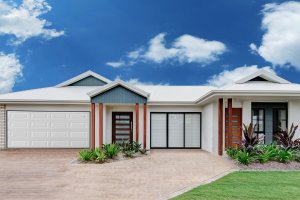Property values up 13.5% last financial year plus 1.6% in July

.
.
.
.
.
Property values up 13.5% last financial year plus 1.6% in July
National home values rose 1.9% in June, taking annual growth to 13.5% for the financial year. The growth in Australian dwelling values was led by houses, which rose 15.6% over the year, compared to a 6.8% lift in unit values.
CoreLogic Head of Research for Australia, Eliza Owen noted “This is the highest annual rate of growth seen across the Australian residential property market since April 2004, when the early 2000’s housing boom was winding down after a period of exceptional growth. However, there are some markets where performance is starting to ease more notably.”
Each of the capital cities saw an uplift in dwelling values in June, ranging from a 3.0% rise in Hobart to a more subdued 0.2% lift in Perth. The performance gap has narrowed between regional Australia and the capital cities, though regional Australia did outperform slightly in monthly growth terms, rising 2.0% through June compared to 1.9% across the combined capital cities.
Darwin maintained the highest annual rate of growth across the capital cities, increasing 21.0% in value over the financial year, followed by Hobart (19.6%). Across regional Australia, regional NSW had the highest annual growth in dwelling values (21.1%), followed by regional Tasmania (20.8%).
Australian housing values increased a further 1.6% in July, according to CoreLogic’s national home value index. The latest rise takes housing values 14.1% higher over the first seven months of the year and 16.1% higher over the past twelve months.
CoreLogic's research director, Tim Lawless, described the market as strong, but losing steam. “The 16.1% lift in national housing values over the past year is the fastest pace of annual growth since February 2004, however the monthly growth rate has been trending lower since March this year when the national index rose 2.8%.”
Mr Lawless attributes the lower rate of growth in housing values to several factors. “With dwelling values rising more in a month than incomes are rising in a year, housing is moving out of reach for many members of the community. Along with declining home affordability, much of the earlier COVID related fiscal support (particularly fiscal support related to housing) has expired. It is however, encouraging to see additional measures being rolled out for households and businesses as the latest COVID outbreak worsens.
“On the flip side, demand is being stocked by record low mortgage rates and the prospect that interest rates will remain low for an extended period of time. Dwelling sales are tracking approximately 40% above the five-year average while active listings remain about -26% below the five-year average. The mismatch between demand and advertised supply remains a key factor placing upwards pressure on housing prices,” Mr Lawless said.
The pace of dwelling price appreciation has slowed across each of the capital cities. Sydney has recorded the sharpest reduction, with the monthly capital gain falling from 3.7% in March to 2.0% in July. According to Mr Lawless, “Sydney is the most expensive capital city by some margin and it has also been the city where values have risen the most over the first seven months of the year. Worsening affordability is likely a key contributing factor in the slowdown here, along with the negative impact on consumer sentiment as the city moves through an extended lockdown period.”
Although the pace of growth has slowed, housing values continue to rise at a rate that is well above average across most areas of the country.
The previously stronger performance across regional markets relative to the capital cities has normalised through 2021. After the combined regional areas of Australia recorded stronger housing market conditions through the second half of 2020, the first seven months of 2021 shows an almost equal rate of growth in dwelling values across the combined regional and capital markets with values up 14.5% and 14.0% respectively.
Source: CoreLogic
